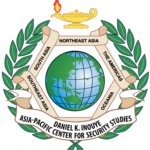The denouement came with big screaming headlines, “Sri Lanka’s President Flees country on a military jet.” For the youth and women-led ‘Janatha Aragalaya’ (People’s Struggle), like so many in the island nation, the political obituary of the Rajapaksa clan-led government, in a manner so undignified, is seen as the first step in their months-long demand for good governance.
Gotabaya Rajapaksa, the 73-year-old retired lieutenant colonel, had built his reputation on being efficient and ruthless as de facto head of the military, under his elder brother President Mahinda Rajapaksa, by exterminating the Tamil separatist movement after 26 years of civil war in 2009.
Trounced out of power as a corrupt and authoritarian regime in 2015 after a decade at the helm, the Rajapaksa clan bid its time. History was on their side. The sparring bunch of disparate bedfellows that formed the coalition government would disintegrate, sooner than later, under the weight of their competing ambitions. The Easter attacks in March 2019 provided that opportunity.
Campaigning heavily on a platform of national security, after suicide bombers killed more than 250 people on Easter Sunday, the Sinhalese-Buddhist nationalist won an easy victory in the 2019 election. “The Terminator,” as he was reverentially nicknamed, became President.
His dethroning from ‘war hero’ to fugitive halfway through his five-year term, and dramatic escape under the cover of darkness to safe shores, offers a cautionary tale for the self-assured hubris among countries in the danger zone of economic crisis.
For long-rated as a model developing country, Sri Lanka’s elevation to an upper middle-income country by the World Bank in 2019 was to be a fleeting moment of glory. Shortly thereafter, its status was downgraded when a depreciating currency, whooping inflation, and a crippling foreign debt burden crippled its economy. The country defaulted on its debts for the first time in its history as it grappled with a slump in foreign tourism and a steep fall in remittances triggered by the Covid-19 pandemic and the war in Ukraine. Saddled with foreign debt so big that it had no money left for basic imports and the bare necessities like food, fuel, medicine, and cooking gas for its 22 million people.
And as if on cue, the usual suspects emerged to trumpet the discredited trope of China’s debt trap’ as the cause of the island’s impoverishment. China, which accounts for only 10 percent of Sri Lanka’s total US$51 billion of external debt, similar to Japan, is Sri Lanka’s fourth biggest lender, behind international financial markets and the Asian Development Bank (ADB).
In his letter of resignation, the ousted President blamed the country’s bankruptcy on years of economic mismanagement under his predecessors and on the pandemic. Economists, however, attribute much of the blame to a series of disastrous financial policies by the President himself. Slashing taxes (a promise he made during his election campaign) and imposing an outlandish ban on chemical fertilizers (before dropping it seven months later) were among the most ruinous. These led to a depletion of state coffers and damaged the agriculture sector. Food prices skyrocketed, and staples became scarce.
Months of shortages and unavailability of fuel, gas, electricity, food items, and medicines, rolling power blackouts, and an inflation rate spiraling towards 50%, led to nationwide protests against the President and his squabbling family. The uprising, for the first time, brought together the three major communities – Sinhalese, Tamils, and Muslims – for a common cause. As the protests mounted, the media was singled out for stoking fear and anger.
In addition to dealing with foreign journalists parachuting into the situation with their ignorance and biases to feed the misinformation cycle, the People’s movement, organic and enabled by social media, has ably fought off disinformation campaigns by the government to undermine the protests. Disinformation researchers and fact-checkers crowdsourced a list of places with generators to work during power outages and arm citizens with information that could affect real change. The protesters tenaciously held fast against bullets, teargas, threats, and water cannons.
The acting President Ranil Wickremesinghe denounced the protesters as “fascists” and “extremists” on TV and declared a nationwide state of emergency, only to have it defied by thousands of them who stormed his office. Public anger at him has erupted several times, including burning down his private residence. The slogan “Gota Go Home” has morphed to “Ranil Go Home.” There are no signs of serious domestic solutions to the crises, nor any signs of a recovery plan.
Even as negotiations with the International Monetary Fund (IMF) are ongoing, hopes are being pinned on a donor conference proposed by Sri Lanka to include China, India, Japan, and the United States for more foreign assistance before presenting an interim budget in August. Only a revival of the economy, alleviation of hardship among the citizens, and political reforms can ensure the end to the unprecedented protests before the island’s 75th Independence Day next February.
Postscript: It was left to the sports papers to provide some hope. “Sri Lanka demolish Australia by an innings to draw Test series in Galle amid protests,” read the headline. The protests had relegated cricket, a national obsession, to something of a sideshow. Yet, the tour of the Australian team generated about $2 million for Sri Lankan cricket which is to be donated to initiatives for public welfare, primarily to the health sector to purchase vital medicines. Currently ongoing on the island is the Pakistan series in preparation for Sri Lanka to play host to the Asia Cup next month. The series is expected to bring more tourists to witness the sports’ greatest rivals: India vs. Pakistan.
The views expressed in this article are the author’s alone, and do not necessarily reflect the official position of the DKI APCSS or the United States Government.
July 2022
Published: January 3, 2023
Category: Perspectives
Volume: 24 - 2023
Author: Shyam Tekwani





